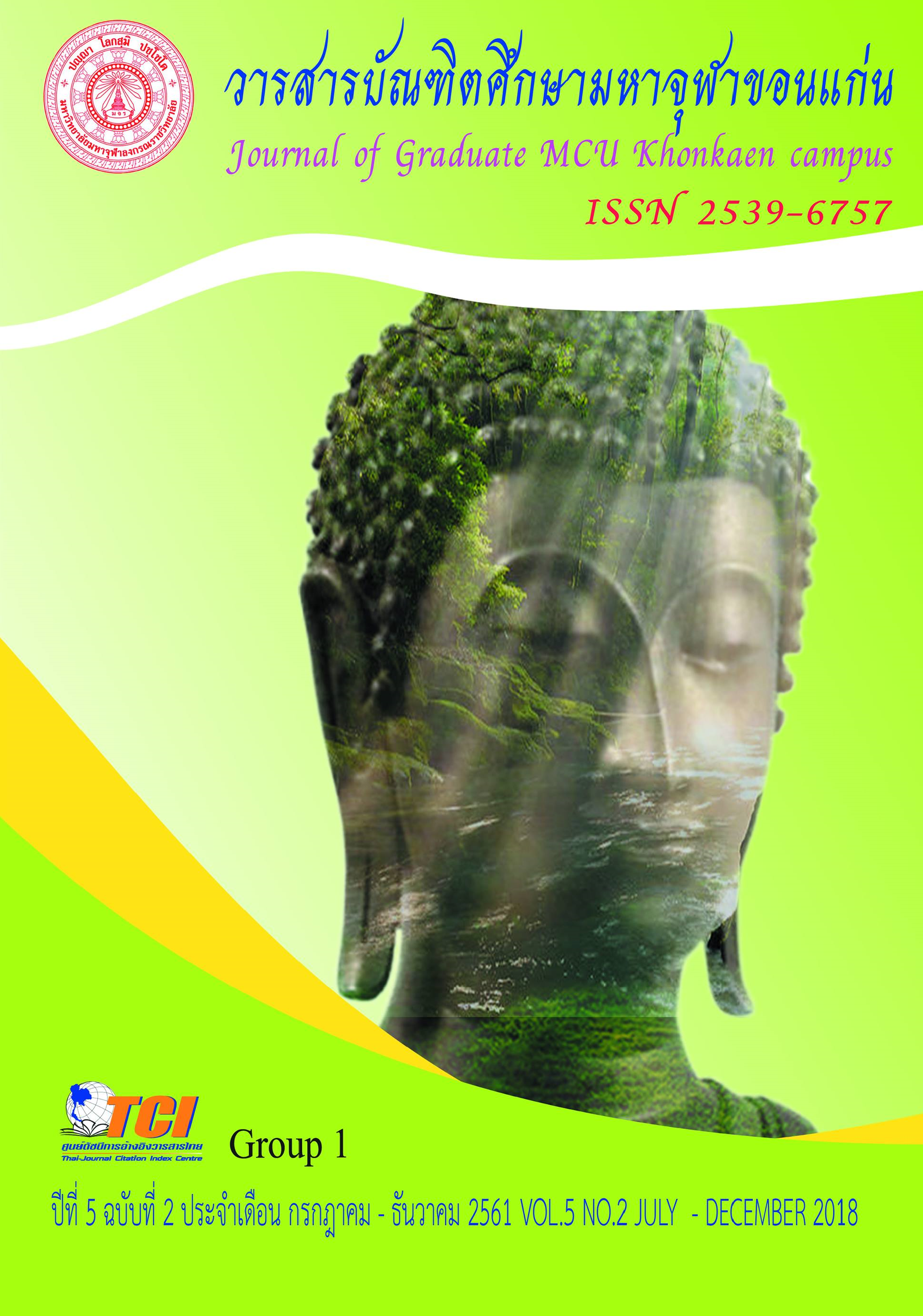รูปแบบการจัดการลูกค้าสัมพันธ์ด้วยประสบการณ์ลูกค้าของธุรกิจโรงแรม ระดับ 3–5 ดาว ในเขตภาคตะวันออกเฉียงเหนือ
Main Article Content
Abstract
การวิจัยนี้มีวัตถุประสงค์ เพื่อศึกษาสภาพปัจจุบันของการจัดการลูกค้าสัมพันธ์ของธุรกิจโรงแรม ระดับ 3–5 ดาว ในเขตตะวันออกเฉียงเหนือ และเพื่อวิเคราะห์ปัจจัยที่มีอธิพลต่อผลการดำเนินงานของธุรกิจโรงแรม ระดับ 3-5 ดาว ในเขตภาคตะวันออกเฉียงเหนือ สถิติที่ใช้ในการวิจัย ได้แก่ ร้อยละ ค่าเฉลี่ย ส่วนเบี่ยงเบนมาตรฐาน และการวิเคราะห์องค์ประกอบเชิงยืนยัน (Confirmatory Factor Analysis : CFA)
ผลวิจัยพบว่า1) ศึกษาสภาพปัจจุบันของการจัดการลูกค้าสัมพันธ์ของธุรกิจโรงแรม ผู้ตอบแบบสอบถามส่วนใหญ่เป็นเพศหญิง มีอายุไม่เกิน 40 ปี ระดับการศึกษาอยู่ระดับปริญญาตรี ประสบการณ์ในการทำงานไม่เกิน 5 ปี ตำแหน่งส่วนใหญ่เป็นผู้จัดการทั่วไป ธุรกิจโรงแรมส่วนใหญ่มีลักษณะรูปแบบการจัดตั้งธุรกิจเป็นบริษัทจำกัด มาตรฐานของโรงแรมเป็นระดับ 3 ดาว มีเงินลงทุนจดทะเบียน ระหว่าง 1,000,001– 10,000,000 บาท ระยะเวลาในการดำเนินธุรกิจนับตั้งแต่ก่อตั้งในประเทศไทย 20 ปีขึ้นไป จำนวนห้องพัก น้อยกว่า 100 ห้อง มีจำนวนพนักงานน้อยกว่า 50 คน และกลุ่มลูกค้าหลักของโรงแรมเป็นลูกค้าชาวไทย 2) เพื่อวิเคราะห์ปัจจัยที่มีอธิพลต่อผลการดำเนินงานของธุรกิจโรงแรม ระดับ 3-5ดาว ในเขตภาคตะวันออกเฉียงเหนือ มีปัจจัยที่สำคัญ จำนวน 5 ปัจจัย ได้แก่ 1) ความพร้อมขององค์กร (Factor loading=.980) 2) ความพร้อมในการให้บริการที่มีคุณภาพ (Factor loading=.971) 3) ประสาทสัมผัส (Factor loading=.889) 4) ความพร้อมด้านเทคโนโลยีสารสนเทศ (Factor loading=.887) 5) ความพร้อมการมุ่งเน้นการตลาด(Factor loading=.840)
The purposes of this research were; 1) to study the current state of customer relationship management of 3-5 stars hotel business in the northeast, 2) to analyze the factors influencing the implementation of the 3-5 stars hotel business in the northeast. The statistics used in this study were percentage, mean, standard deviation and confirmatory factor analysis (CFA)
The research found that 1) the majority of respondents are female, age not more than40 years. The education level is bachelor degree with the experience does not exceed 5 years. The most position is General Manager. The hotel business establishment is mainly a limited company. The standard hotel is a 3 -stars hotel with investments registered during 1,000,001-10,000,000 baht. The period of the business is more than 20 years since established in Thailand. The rooms were less than 100 rooms with a total staff of less than 50 employees. The main customer of the hotel is Thai. 2)to analyze the factors effected the general performance of 3-5 stars hotels in the Northeast. There were 5 significant factors; 1) the availability of an organization (Factor loading = .980) 2) the availability of the quality service (Factor loading = .971) 3), sensory (Factor loading = .889). 4) the availability of information technology (Factor loading = .887) 5) ready to focus on marketing (Factor loading = .840).

